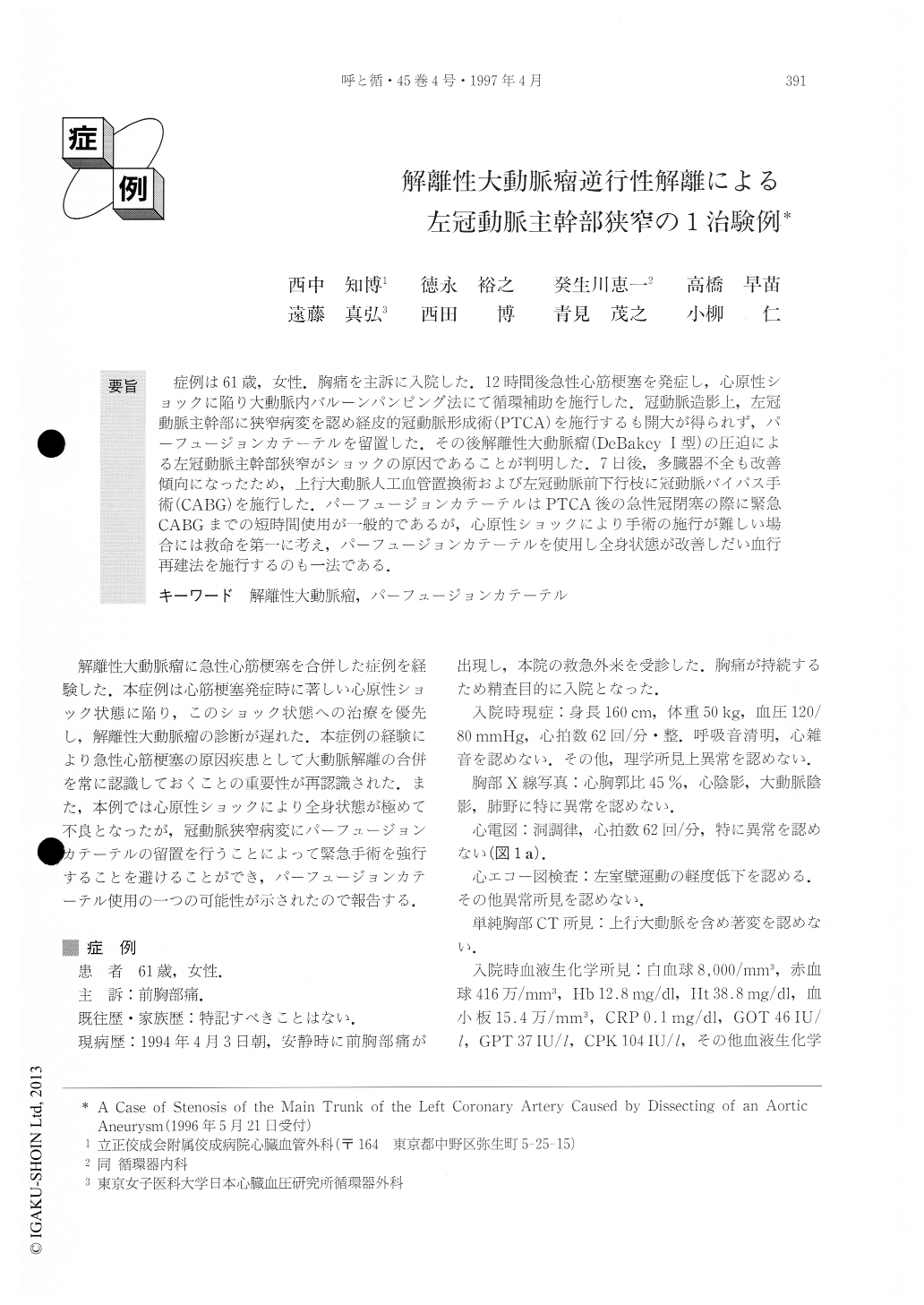Japanese
English
- 有料閲覧
- Abstract 文献概要
- 1ページ目 Look Inside
症例は61歳,女性.胸痛を主訴に入院した.12時間後急性心筋梗塞を発症し,心原性ショックに陥り大動脈内バルーンパンピング法にて循環補助を施行した.冠動脈造影上,左冠動脈主幹部に狭窄病変を認め経皮的冠動脈形成術(PTCA)を施行するも開大が得られず,パーフュージョンカテーテルを留置した.その後解離性大動脈瘤(DeBakey I型)の圧迫による左冠動脈主幹部狭窄がショックの原因であることが判明した.7日後,多臓器不全も改善傾向になったため,上行大動脈人工血管置換術および左冠動脈前下行枝に冠動脈バイパス手術(CABG)を施行した.パーフュージョンカテーテルはPTCA後の急性冠閉塞の際に緊急CABGまでの短時間使用が一般的であるが,心原性ショックにより手術の施行が難しい場合には救命を第一に考え,パーフュージョンカテーテルを使用し全身状態が改善しだい血行再建法を施行するのも一法である.
A 61-year-old woman was admitted to our hospital complaining of chest pain. Twelve hours later, she developed cardiogenic shock. and circulation assistance with intra-aortic balloon pumping was commenced. Coronary angiography showed severe stenosis of the main trunk of the left coronary artery. Percutaneous transluminal coronary angioplasty (PTCA) was attemped, but failed. A perfusion catheter was inserted in the left main trunk. Later it was revealed that the cause of cardiogenic shock was severe coronary stenosis caused by compression by a dissecting aortic aneurysm (Dehakey type I). Seven days later, she had recovered from multiple organ failure, and underwent an opera-tion for replacement of the ascending aorta with an artificial graft, and coronary artery bypass grafting (CABG) to the anterior descending branch of the left coronary artery. In cases of acute occlusion after PTCA, a perfusion catheter is often used for a short time until emergency CABG is carried out. When a patient ievelops cardiogenic shock and surgery cannot he safely performed, to save life, a perfusion catheter allows surgery to be delayed until recovery of the general condition of the patient is attained.

Copyright © 1997, Igaku-Shoin Ltd. All rights reserved.


